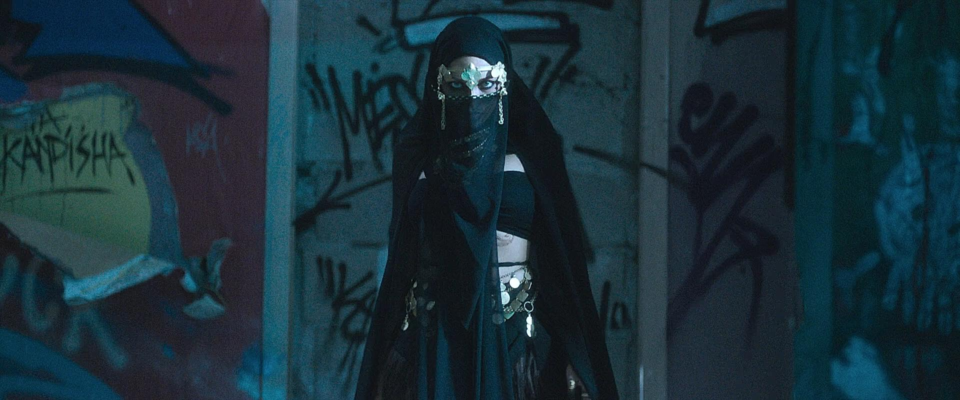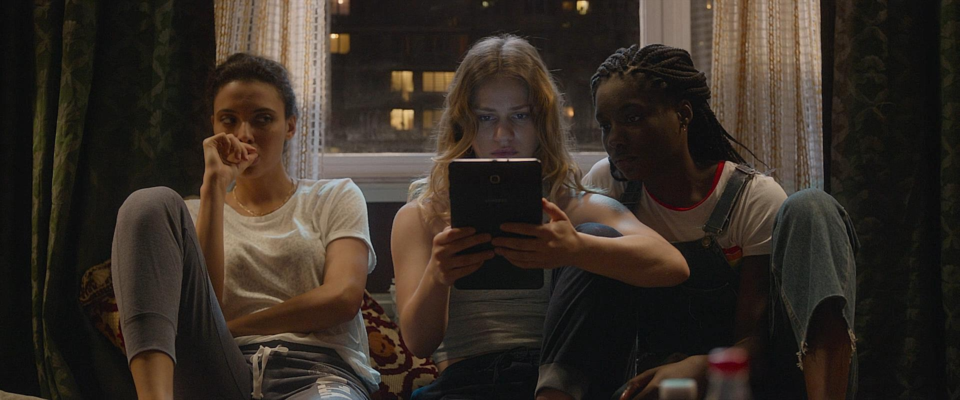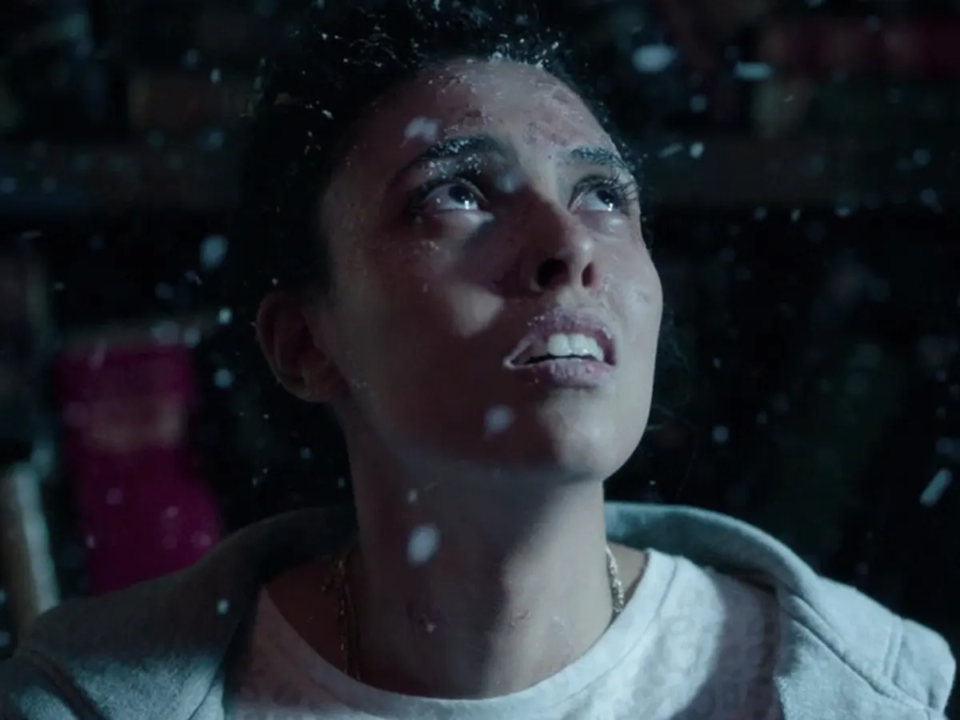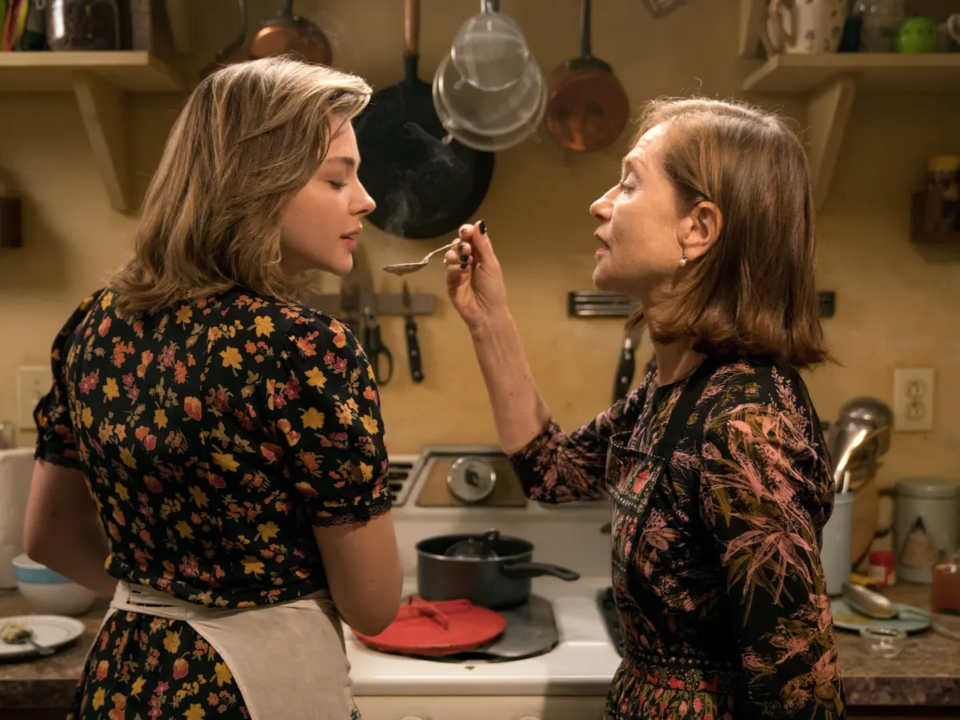‘Kandisha’: A Feminist Slasher?

When you look up what makes a slasher, the internet tells you that it is “a horror subgenre that meets certain criteria, including an effective killer, a high body count, and non-firearm weapons”. Or “a genre of horror films involving a killer stalking and murdering a group of people, usually by use of bladed or sharp tools like knife, chainsaw, scalpel, etc.”
But I feel as though us fans know that it’s a genre where violence is done to women first and their male co-stars second. We understand this violence is, in part, because she is a woman. Her femaleness is what makes her attractive prey. We condone this violence in order for the victims to be whittled down to our “final girl”, who will triumph by the skin of her teeth after we’ve witnessed how much she can take. It’s all about the high threshold for pain and suffering. Let’s face it, women are the best at that.
This always left me feeling a bit queasy when it came to slashers. I tended to avoid them or watch them while rolling my eyes. I never really felt like I could let myself go and enjoy them for fear of seeing a woman be humiliated and mutilated for being too hot or not hot enough, or even just having the nerve to be outside after dark. However, I feel that folks are making changes in the slasher-verse as new voices enter the frame and audiences want more from this subgenre than virgins and their serial killers.
Enter Kandisha, released in 2020, directed by Julien Maury and Alexandre Bustillo, the duo whose work has been described as part of the “New French Extremity”. The film centers around Amélie, and her best friends Bintou and Morjana as they hang out with friends, work to make ends meet, graffiti neighboring abandoned buildings, and talk shit during their summer break.

Maury and Bustillo do an excellent job of establishing Amélie’s problematic ex-boyfriend right from the start. In the opening scene, he asks Morjana and Bintouabout Amélie. The girls, and the boys they’re hanging out with, tease him about his inability to get over it. They make it plain that Amélie will never take him back. The group has relatable and believable banter and though I clocked this ex as a possible red flag, this was more from lived experience than anything concrete the film was showing me.
That makes the subsequent attempted sexual assault by said ex that much more effective. He’s desperate, he’s crying, and he escalates to violent action all while begging his ex-girlfriend to take him back. Amélie is blindsided and defends herself with everything she’s got while this young man continues to cry, plead, hit, and force himself on her. It’s messy and personal, as intimate partner violence often is.
We follow Amélie home and watch her summon Aicha Kandisha, a legend that she and her friends jokingly discussed earlier in the film. At this point, all we know is that Aicha Kandisha helps women who have been wronged by men. To summon her, you must draw a pentagram and say her name over and over. Our protagonist does so in her own blood and calls out to her. Amélie’s attacker is stalked by Aicha Kandisha into on-coming traffic and dies. This death feels right and her friends, as well as the boys they hang out with, all agree. Here is where the film takes a unique turn.

Kandisha does not stop and she has no intention of sticking to only who we feel are the “bad guys”.
I love learning about boogeymen (or women, in this case) from around the world. And this film delivers on just that. It doles out information on Kandisha, her origins, and her goals between some excellent kills. The gore is well placed with the kills becoming increasingly vicious as Kandisha gets closer to her mark: her summoner Amélie. What I loved about this was the drawn-out reveal of Kandisha’s true nature. Sometimes she appeared in full burka giving spooky auntie vibes, sometimes topless and hiding behind a thin face veil, and lastly, as a ten-foot-tall half-goat, half-woman beast.
Most times I find that if the monster is female she must still be sexy. If she’s not it’s because she’s old, which feels more like a sexist comment than a creative choice. It’s rare that a film gives you a truly bloodthirsty monstrous femme. But, Kandisha makes this promise and delivers. Once a Moroccan aristocrat whose husband was captured and killed by Portuguese invaders, Aicha Kandisha took matters into her own hands and became a warrior. She killed many soldiers until her capture, torture, and death by six Portuguese men.
Then, her soul bonded with a Jinn, which in Arabic mythology is a spirit on earth, invisible to humans, that can shapeshift and has magical powers. When Kandisha is invoked she demands the lives of six men and for those of you who remember Buffy The Vampire Slayer, “never go for the kill when you can go for the pain.” Kandisha does not only target the man that did you wrong but all the men you are connected to, regardless of whether that connection is negative or positive. She goes for the relationship that is strongest and shows no mercy.
Much like Nia DaCosta’s Candyman, where the violence only happens to the white characters giving us a horror film in which Black bodies are exempt from being torn apart, Maury and Baustillo give us a slasher where the kills only happen to the male characters. Young women being hunted and punished is the bedrock of slashers and one that I’ve become accustomed to. So its absence had me all in my feelings.

Kandisha is the first film where I worried about the men being out after dark. I took note of what they were wearing, and I was frustrated when they didn’t do what the women said in order to stay safe. There was also a variety of male representation to give a well-rounded scope of male roles in the lives of our protagonists; from best friends and crushes to loving fathers, protective older brothers, and defenseless younger ones. What Kandisha brought to the table was a nuanced and tender portrayal of the female and male characters. This makes the kills feel meaningful while still having that graphic flair that slashers are known for.
Looking into Maury and Baustillo’s work their films exclusively center on women (such as Inside and The Deep House). But I don’t think this is due to any kind of feminist allyship agenda. I feel this has more to do with the “New French Extremity” that they’ve been attributed to, a style of filmmaking that has its roots in body horror. A female body is a perfect site for this subgenre because it undergoes transformations that are still understudied (from menstruation to menopause) with parts that still hold great mystery (the clitoris). The female is considered either more or less than human. Whether this director duo was aiming to create a feminist slasher or not, their film got me thinking about if it’s possible. If so, what would the criteria be? Do all the victims need to be male? Or does the killer simply need to be female?
Greta is a prime example of a female killer being all you need in a slasher. Taking place almost entirely between two women in a toxic mother/daughter dynamic, it gives you a truly monstrous femme. Girls rule very literally in this one. I cheered at Greta’s defeat at the hands of a strong female friendship (yes, the protagonist’s best friend shows up, kicks ass, and saves the day!). The antagonist in Greta, a serial killing mom, comes to a satisfying but murky end, much like Kandisha, and true to form for any good slasher villain.

These two films are part of a growing list of slashers delving into forms of toxic female relationships through female killers such as Piggy, Sissy, The Boy Behind The Door, Tragedy Girls, and Jennifer’s Body. Even these are built on the foundation that classics like Carrie and Misery put forth. Our appetite for killer women is increasing. But, can these killers be embraced in the same way male icons like Michael, Freddy, and Jason are?
Our hesitancy is in part to our loyalty. Discussion around violence against women, rape culture, and women’s rights has become mainstream. So enjoying killer women and their demise seems counterintuitive. Can you really be a fan of violent women while fighting for women’s rights? Can you love slashers and be a feminist? An open conversation about toxic dynamics among women or, dare I say, toxic femininity, seems as though it would undermine any forward movement for women.
On the one hand, I believe in the push ‘n’ pull of the universe in order to achieve and maintain balance. So if there’s toxic masculinity then there must be toxic femininity, and both are in collaboration with each other. Dismantling one inevitably means you dismantle the other. I love these new femme-driven slashers that get into the weeds of the fucked up things women do to each other. I feel more empowered to do something about that than I do about the patriarchy.
I know many people don’t share this feeling but I believe there’s a place (and a desire) for these gruesome gals. As the slasher evolves we’ll see more of them as well as “final boys”. The Ritual comes to mind here as well as Chucky the TV series, both casting men or boys in the role typically held by the “final girl”. This brings me back to the main question, what does it take to make a feminist slasher? Below is my rubric (still in rough draft), a kind of slasher Bechdel test.
I think a feminist slasher must have:
- A female killer
- Nuanced female and male characters that do not serve a romantic story arc
- A “final survivor” (inclusive of any and all gender expressions)
- Creative kills (a slasher necessity)
- An awesome death scene for our villain that leaves room for sequels
As the push for more nuanced conversations and perceptions around gender increases so will our slasher stories. Whether this becomes the rubric (I expect to be credited!) or not, I think we’re only going to see more stories exploring why women kill.
Categorized:Editorials News

